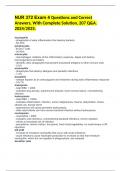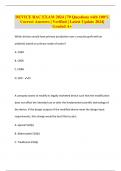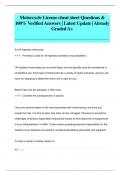Tentamen (uitwerkingen)
NUR 372 Exam 4 Questions and Correct Answers, With Complete Solution, 207 Q&A. 2024/2025.
- Vak
- Instelling
NUR 372 Exam 4 Questions and Correct Answers, With Complete Solution, 207 Q&A. 2024/2025. neutrophils - phagocytes of early inflammation that destroy bacteria - 55-70% lymphocytes - B and T cells - 20-40% monocytes - macrophages: initiators of the inflammatory response, digest and destroy...
[Meer zien]






